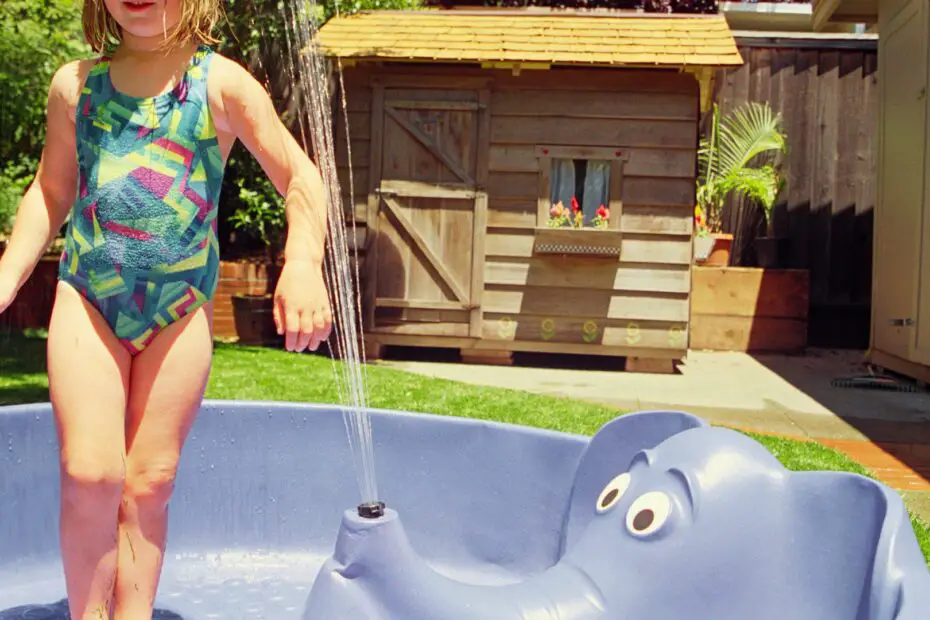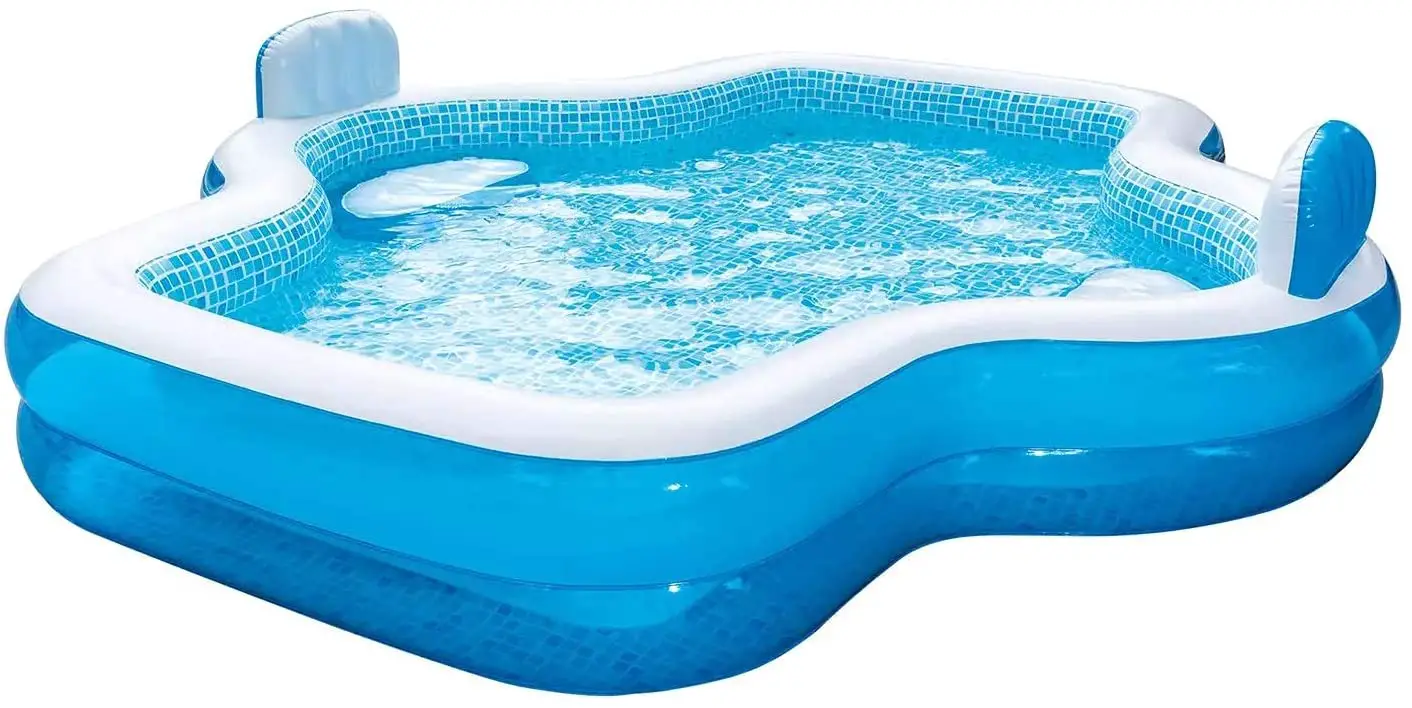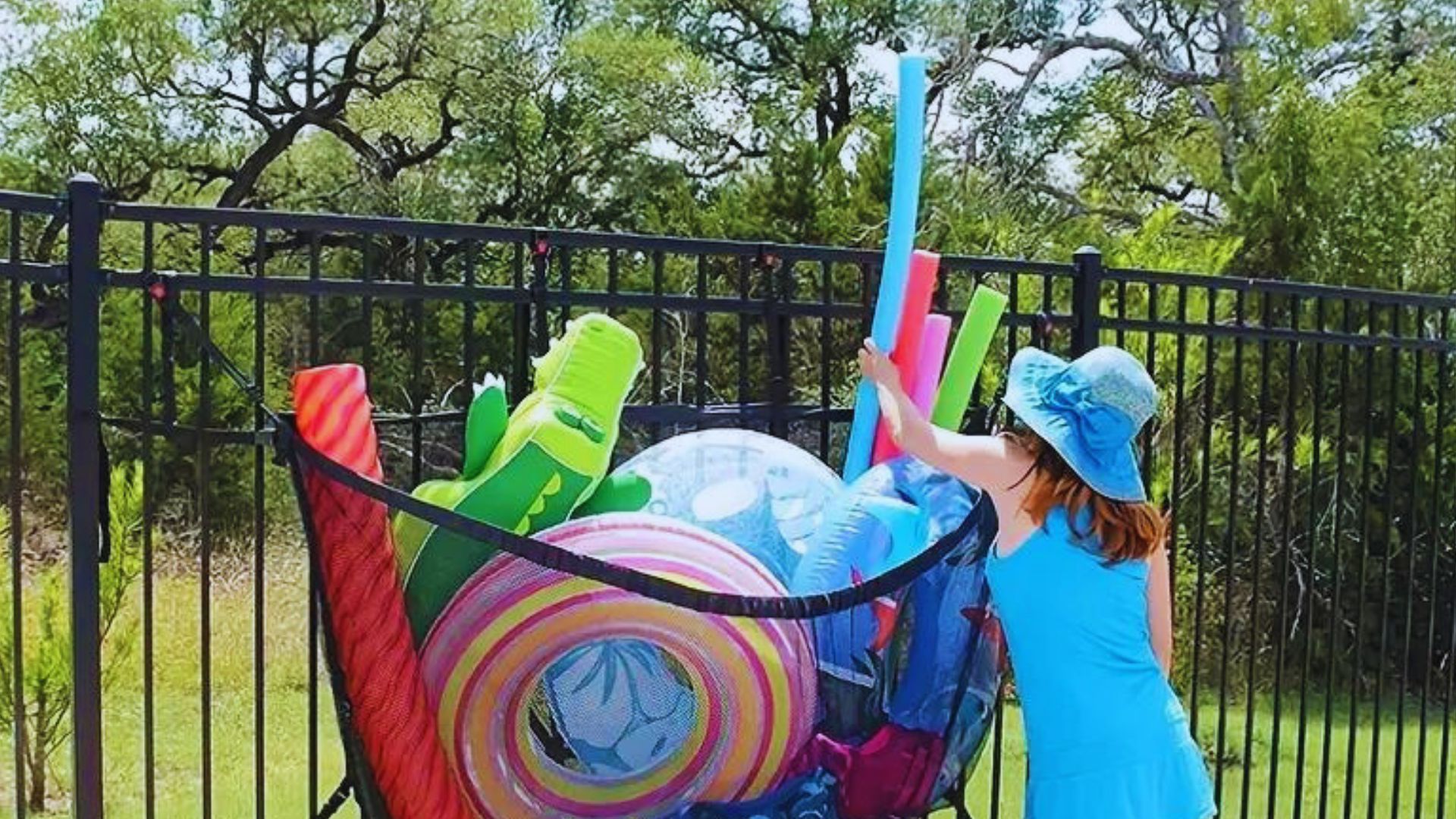As summer approaches and the heat intensifies, many parents look for ways to keep their children cool and entertained. A popular solution is the kiddie pool, a staple of childhood summers that provides a refreshing escape from the heat for youngsters. However, one question that often arises for those setting up these pools is: How much water does a kiddie pool hold? This article will look into the various factors that determine the water capacity of kiddie pools, including their size, shape, and design, providing insight into how to appropriately fill them to ensure fun and safety for all.
Kiddie pools come in various sizes, shapes, and designs, each influencing the pool’s water capacity. From small, inflatable options perfect for toddlers to larger, more robust models that can accommodate multiple children, the diversity in kiddie pools is vast. The material—be it plastic, vinyl, or rubber—also plays a crucial role in determining the pool’s durability and, consequently, its capacity to hold water. Understanding these aspects is essential for parents and guardians to ensure they provide a safe and enjoyable environment for children to play in during the warmer months.
Factors Influencing Water Capacity
Size
The size of a kiddie pool is a primary determinant of its water capacity. Generally, kiddie pools are categorized into small, medium, and large sizes, each with a varying capacity:
- Small Kiddie Pools: These are typically designed for very young children or toddlers, with dimensions that might range around 33.5 inches by 33.5 inches by 9 inches. Such pools usually hold about 15 gallons of water, as noted in the product specifications for small inflatable pools like the Intex Baby Pool【7†source】.
- Medium Kiddie Pools: Medium pools offer more space and can accommodate 2 to 3 children. They usually measure around 58 inches by 13 inches to 76 inches in length and width and can hold between 45 to 65 gallons of water.
- Large Kiddie Pools: Larger pools are designed to hold more water and accommodate more children or even adults. For example, a pool measuring 120 inches by 72 inches by 22 inches can hold approximately 312 gallons of water, suitable for 2 to 3 kids and an adult.
Shape
The shape of a kiddie pool also impacts its water capacity. The basic shapes include circular, rectangular, and square, each with a unique formula to calculate water volume:
- Circular Pools: The volume of a circular pool is determined using the formula for the volume of a cylinder, which takes into account the radius and depth of the pool. For example, a small circular pool might hold approximately 200 gallons, while a large one could contain about 600 gallons.
- Rectangular and Square Pools: The water capacity for these shapes is calculated by multiplying the length, width, and height of the pool. Rectangular pools tend to hold more water due to their elongated shape. For instance, small rectangular pools can hold between 250-300 gallons, while larger ones might contain 500-600 gallons.
Depth
Depth is a crucial factor that influences the water capacity of a kiddie pool. It determines not only how much water the pool can hold but also the safety and suitability of the pool for different age groups:
- Shallow Pools: Typically meant for toddlers or younger children, shallow pools are safer as they reduce the risk of drowning. However, they hold less water.
- Deeper Pools: These are suitable for older children and can hold more water, providing a more immersive experience. For example, the Taylor Toy Snapset Pool, which is suitable for kids and adults, has a depth that allows it to hold around 203 gallons of water.
In conclusion, understanding the interplay of size, shape, and depth is essential when selecting a kiddie pool. It ensures that the pool meets the safety needs of the children while also providing the desired level of enjoyment and cooling off during the hot summer days.
Types of Kiddie Pools
Inflatable Pools
Inflatable kiddie pools are popular due to their ease of storage and setup. They come in various sizes, from small to large, accommodating different numbers of children and water capacities:
- Sizes and Water Capacity: A small inflatable pool might measure around 33.5 inches by 33.5 inches by 9 inches, holding approximately 15 gallons of water, like the Intex Inflatable 15 Gallon Kids Pool. Medium inflatable pools, on the other hand, can hold between 45 to 65 gallons, suitable for 2 to 3 children. Larger options can accommodate more kids or even adults, with capacities reaching up to 312 gallons for pools measuring around 120 inches by 72 inches by 22 inches.
Plastic Pools
Plastic kiddie pools are known for their durability and sturdiness. Unlike inflatable pools, they don’t require air to set up and are generally smaller in size:
- Typical Water Capacity: Hard plastic pools are typically on the smaller end of the spectrum, with many designed for younger children. For instance, the Starplay Sunflower Pool is a smaller plastic pool that holds up to 22 gallons of water. Larger plastic pools, while less common due to storage and durability concerns, can hold significantly more water.
Snapset Pools
Snapset pools are a hybrid between inflatable and hard plastic pools, offering easy setup without the need for inflation and more robust sidewalls:
- Description and Water Capacity: Snapset pools can be unfolded and set up quickly, with a sturdy sidewall that rises as the pool is filled with water. They are typically larger than standard plastic pools and can hold more water. For example, a snapset pool like the Taylor Toy Snapset Pool can hold approximately 203 gallons of water, providing enough space for multiple children and even adults.
Each type of kiddie pool offers its advantages, whether it’s the ease of storage and setup of inflatable pools, the durability of plastic pools, or the convenience and capacity of snapset pools. Choosing the right type depends on the available space, the age and number of children using it, and the desired ease of setup and storage.
IV. Water Capacity Estimates
Small Inflatable Pool:
- Dimensions: Typically, a small inflatable pool might measure around 33.5 inches by 33.5 inches by 9 inches.
- Capacity: Such pools usually hold about 15 gallons of water, as exemplified by the Intex Inflatable 15 Gallon Kids Pool.
Medium Inflatable Pool:
- Dimensions: A medium-sized inflatable pool may be around 58 inches by 13 inches to 76 inches.
- Capacity: These pools can hold between 45 to 65 gallons of water, providing enough space for 2 to 3 children to play comfortably.
Large Plastic Kiddie Pool:
- Dimensions: Large plastic pools can vary significantly in size, but a typical example might measure around 72 inches by 72 inches by 12.5 inches.
- Capacity: One such pool, the Taylor Toy Snapset Pool, can hold up to 203 gallons of water, accommodating several kids and even adults.
General Estimates for Round and Rectangular Pools:
- Small Round Pool: These pools might hold approximately 200 gallons of water.
- Large Round Pool: Larger round pools can accommodate about 600 gallons.
- Small Rectangular Pool: Smaller rectangular pools usually have a capacity ranging from 250 to 300 gallons.
- Large Rectangular Pool: For larger rectangular options, the capacity can vary between 500 to 600 gallons.
These estimates illustrate the variety in kiddie pools’ sizes and capacities, providing a range of options depending on the available space and the number of children who will be using the pool. Always ensure to check the manufacturer’s specifications for the most accurate water capacity information when selecting a kiddie pool.
Calculating Water Capacity
Calculating the water capacity of a kiddie pool is crucial for ensuring safety and proper maintenance. The formula you use will depend on the shape of the pool.
Formula for Rectangular and Square Pools
For rectangular or square pools, the formula to calculate water capacity is: Volume (gallons)=Length (ft) × Width (ft) × Depth (ft) × 7.48. The factor 7.48 converts cubic feet to gallons, as there are 7.48 gallons in a cubic foot.
Formula for Circular Pools
For circular pools, the formula is a bit different as it involves pi (π): \text{Volume (gallons)} = \pi \times \text{(Radius (ft))^2} \times \text{Depth (ft)} \times 7.48 Here, you square the radius (half the diameter) and multiply by pi to find the area, then multiply by depth and convert to gallons.
Example Calculation
Let’s calculate the water capacity for a medium-sized rectangular inflatable pool with dimensions 6 ft (length) x 4 ft (width) x 1.5 ft (depth):
- Volume (gallons)=6×4×1.5×7.48
- Volume (gallons)=24×1.5×7.48
- Volume (gallons)=36×7.48
- Volume (gallons)≈269.28
So, this medium-sized rectangular pool would hold approximately 269.28 gallons of water.
Using these formulas, you can estimate the water capacity for any kiddie pool based on its dimensions and shape, ensuring you fill it appropriately for safe and enjoyable use.
Practical Tips for Pool Filling
Filling a kiddie pool is more than just turning on a hose. Here are some practical aspects and safety tips to consider:
Using a Hose
- Controlled Filling: Use a hose with a spray nozzle to control the flow and prevent overfilling. This also helps distribute the water evenly across the pool.
- Water Temperature: Be mindful of the water temperature; too cold can be shocking, especially for little ones. Let the water sit in the sun to warm up a bit before letting children in.
Monitoring Water Levels
- Ideal Depth: The water should not be too deep, especially for younger children. A general rule is to keep the water level at or below the waistline of the youngest child using the pool.
- Adjusting for Displacement: Remember that once children enter the pool, the water level will rise. Fill the pool considering this displacement to prevent overflow.
Safety Tips
- Constant Supervision: Never leave children unattended in or near the pool, regardless of the water depth. Drowning can occur quickly and in just a few inches of water.
- Appropriate Water Depth: Ensure the water depth is appropriate for the age and swimming ability of the children using the pool. For toddlers, a shallow water level where they can sit and play is ideal.
- Check for Leaks and Damage: Before filling the pool, inspect it for any leaks or damage that could lead to water loss or safety hazards.
- Drain After Use: To prevent the growth of bacteria and mosquitoes, drain the pool after each use, clean it, and leave it to dry.
Additional Benefits and Uses of Kiddie Pools
Kiddie pools are versatile and can be repurposed for a variety of fun and practical activities beyond just swimming or wading.
Creative Uses Beyond Swimming
- DIY Ball Pits: Transform a kiddie pool into a safe and entertaining ball pit for children. Simply fill it with plastic balls, and you’ve got an instant play area that can keep kids engaged for hours.
- Relaxation Spots: For adults, a kiddie pool can serve as a mini oasis. Fill it with water, add some comfortable seating or floaties, and it becomes a perfect spot to relax and cool down during hot summer days.
- Gardening: Use a kiddie pool to create a raised bed for gardening. This can be particularly useful for renters or those with limited space. It’s an excellent way to grow herbs, flowers, or even small vegetables.
Convenience and Adaptability
- Small Spaces: Kiddie pools are ideal for small yards, patios, or balconies. Their compact size allows for water fun without the need for a full-sized pool, making them perfect for urban dwellings or homes with limited outdoor space.
- Versatile Activities: Beyond water play, kiddie pools can be used for sensory play activities for children, such as filling them with sand for a makeshift sandbox or using them for arts and crafts projects outdoors.
Kiddie pools, with their myriad uses, offer a range of benefits beyond just a simple splash. They can be adapted for educational activities, relaxation, or even small-scale gardening, showcasing their versatility in both indoor and outdoor settings. Whether it’s providing a cool spot on a hot day or being repurposed into a creative play space, kiddie pools are a valuable asset for entertainment and practicality in compact living spaces.
Conclusion
Understanding the water capacity of kiddie pools is paramount for ensuring not only the enjoyment but also the safety of their users. Knowing how much water a pool can hold allows for proper preparation and use, ensuring that children can play safely without the risk of accidents due to incorrect water levels. Proper pool filling, monitoring water depth, and ensuring the pool’s size and shape are suitable for the intended users are all critical aspects of kiddie pool safety.
Additionally, constant supervision is indispensable when children are using the pool. Even shallow water can pose risks, and adult oversight is crucial to prevent accidents. Beyond safety, maintaining the pool, keeping the water clean, and ensuring its structural integrity extends the life of the pool and enhances the enjoyment it provides.
Kiddie pools, with their versatility, offer more than just a place for children to cool off. They can be transformed into ball pits, relaxation spots, or even miniature gardens, providing value and enjoyment in a variety of settings. Whether it’s a small inflatable pool on a balcony or a larger plastic pool in a backyard, these pools can be a source of endless fun and relaxation when used responsibly.
In essence, a kiddie pool is more than just a simple container for water; it’s a focal point for summer fun, learning experiences, and family memories. By understanding and respecting the nuances of their water capacity and ensuring vigilant supervision, families can safely enjoy the multitude of benefits these pools offer.



